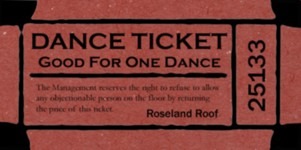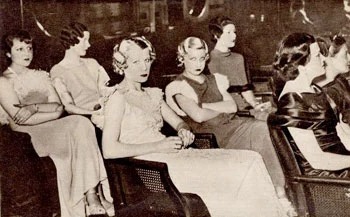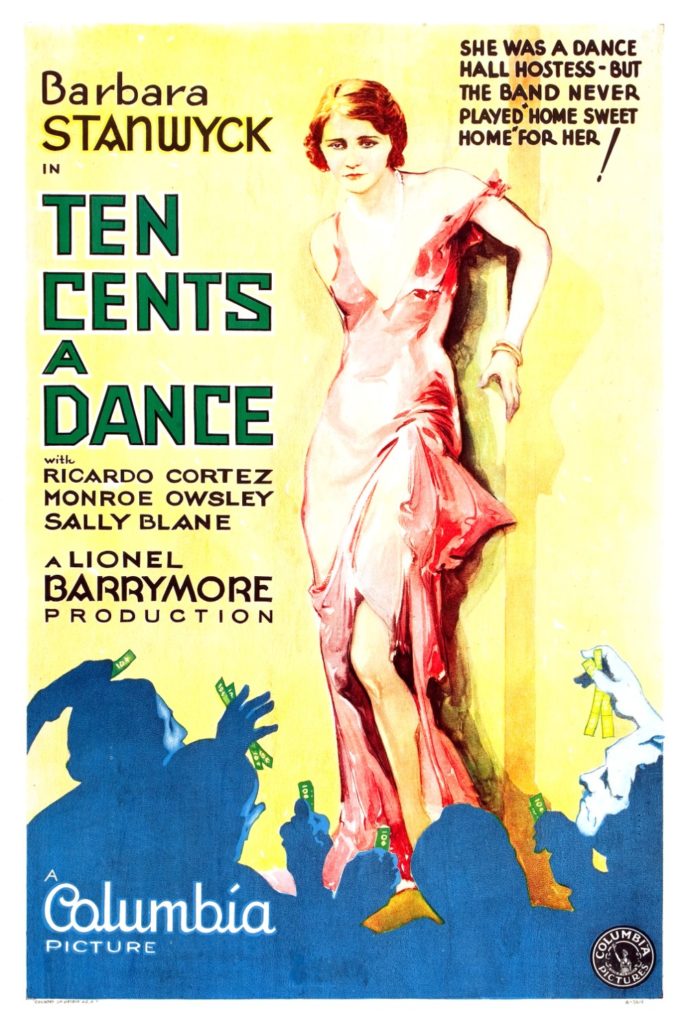
Here’s one more item to add to your list of San Francisco originals: Taxi Dancers.
In 1913, San Francisco enacted new laws that forbade dancing in any cafe or saloon where alcohol was served. Enterprising folks came up with a scheme called the “closed dance hall” by which (to use today’s language) they “rebranded” their businesses as dance academies.
This enabled male customers to pay by the dance, and from then on, the only women on the premises were “dance instructors.”
The term “taxi dancer” came from the fact that, like a taxi-cab driver, a dancer’s pay was proportional to the time she spent dancing with the customer around the floor, usually one song. The dance hall’s cut was usually fifty percent. For the most part, these women were not prostitutes, but a certain stigma attached itself to them.
Most of the City’s “taxi dancers,” also known as “dime-a-dance girls,” could be found on “Terrific Street,” a single block of the old Barbary Coast. Spider Kelly’s was one place that employed them. Born James Curtin, Spider Kelly was a lightweight boxer and trainer who immigrated to San Francisco from Ireland. To save his business from going under the new law, he turned it into a dance hall.
A few doors down from Spider Kelly’s was The Thalia, one of largest of the dance halls on Pacific Street. At the Thalia some hundred “taxi dancers” took their turns on the dance floor. These were so-called “black and tan clubs,” where people of different races congregated, and also the place where San Franciscans first learned the ragtime dances that would become so popular in the 1920s.

The dance hall idea caught on and soon spread across the country. While San Francisco’s taxi dancers were girls and women, New York establishments like Maxim’s offered male professional dancers to female patrons. Rudolph Valentino, the great heart-throb of the silent screen, got his start in show business as a taxi dancer.

By 1931, New York alone operated one hundred taxi-dance halls that could accommodate 50,000 male visitors a week. For immigrant men and others who fell outside the realm of dating and marriage, taxi dancers bestowed a sense of acceptance, equality, and illusion of romance.

Taxi dancing survived well into the 1930s, inspiring at least two films, but in San Francisco the beginning of the end came in September of 1921.
That was the year a budding actress named Virginia Rappe fell ill during a party thrown by “Fatty” Arbuckle in the Fairmont Hotel. She died four days later. The three ensuing criminal trials stoked a media frenzy and also emboldened self-professed “vigilantes” bent on scrubbing the City’s clear of vice—and that included closing down its dance halls.
The “taxi girls” didn’t go out without a fight. Led by a woman named Helen Emick, five hundred women, most between eighteen and thirty, stormed the grand jury charged with determining their fate. Expecting a band of degenerates, the jurors were taken aback by the dancers’ ordinary clothes and respectable appearance, as well as their demands to know how exactly they were meant to support themselves if they couldn’t work in the dance halls.
In San Francisco, the era of taxi dancing ended in 1922 with a law expressly forbidding women from charging for dances. Call it an artifact, a vestige of a bygone time, but the law stands on the books to this day. To catch a glimpse of that dime-a-dance world, check out this 1930s film starring Barbara Stanwyck.

add a comment
+ COMMENTS